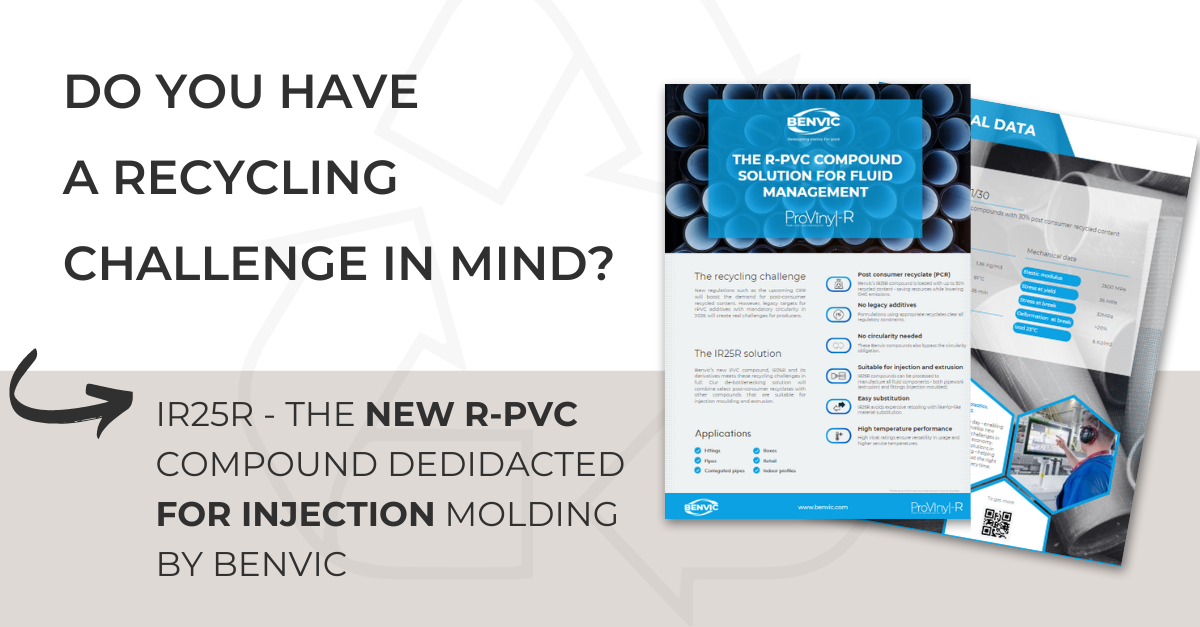Legacy additives and circulatory regulation for PVC recyclates (EU2023/923)
Recent regulations have also been reshaping the PVC supply side; leading Europe’s compounders to adapt their formulations and substitute banned additives, stabilizers and plasticizers with effective alternative compounds.
In addition, the construction sector is now tasked to manage the end-of-life issues of its products in a more environmental manner. Most PVC based building products have quite a long-life expectancy – whether used inside the visible infrastructure or below ground. Several decades of service mean that the additive issues in these particular products need to be handled in a very particular way.
Recognizing this issue, the EU compliance date for long-lived PVC applications – such as pipes and fittings – has been extended to the year 2033.
The regulation specifies that building products of this kind - made with a percentage of recycled PVC - must be either non accessible or protected by another material layer without any legacy additives.
Last – and certainly not least - full recycling circularity for these products has been made mandatory in order to avoid a complicated mix of materials and legacy additives. Therefore, beginning in May 2026, all fluid management applications must demonstrate full circulatory.
In a nutshell, all rPVC content for new pipes and fittings must come from old pipes and fittings.
These new arrangements will necessarily bring the construction sector and its (re)compounding suppliers much closer together. Tensions and bottlenecks can be foreseen regarding feedstock availability, sorting, logistics, traceability and other issues.




